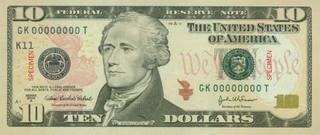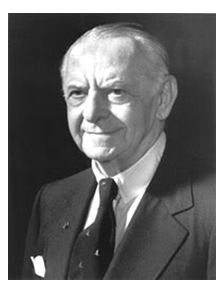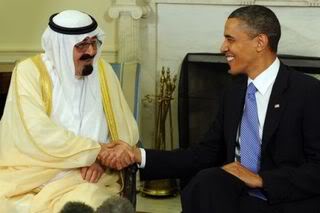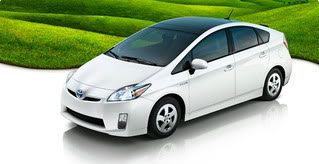
Global Market Comments
January 3, 2013
SPECIAL FOREIGN CURRENCY ISSUE
Featured Trades:
(LONG TERM DOLLAR TREND),
(FXA), (FXC), (BNZ), (CYB), (FXE)
(THE COMING COLLAPSE OF THE YEN),
(THE BIG MAC INDEX), (MCD
CurrencyShares Australian Dollar Trust
CurrencyShares Canadian Dollar Trust
WisdomTree Dreyfus New Zealand Dollar
WisdomTree Dreyfus Chinese Yuan
CurrencyShares Euro Trust
Any trader will tell you the trend is your friend and the overwhelming direction for the US dollar for the last 220 years has been down.
Our first Treasury Secretary, Alexander Hamilton, found himself constantly embroiled in sex scandals. Take a ten-dollar bill out of your wallet and you?re looking at a world class horndog, a swordsman of the first order. When he wasn?t fighting scandalous accusations in the press and the courts, he spent much of his six years in office orchestrating a rescue of our new currency, the US dollar.
Winning the Revolutionary War bankrupted the young United States, draining it of resources and leaving it with huge debts. Hamilton settled many of these by giving creditors notes exchangeable for then worthless Indian land west of the Appalachians. As soon as the ink was dry on these promissory notes, they traded in the secondary market for as low as 25% of face value, beginning a centuries long government tradition of stiffing its lenders, a practice that continues to this day. My unfortunate ancestors took him up on his offer, the end result being that I am now writing this letter to you from California?and am part Indian.
It all ended in tears for Hamilton, who, misjudging former Vice President Aaron Burr?s intentions in a New Jersey duel, ended up with a bullet in his back that severed his spinal cord. Cheney, eat your heart out.
Since Bloomberg machines weren?t around in 1790, we have to rely on alternative valuation measures for the dollar then, like purchasing power parity, and the value of goods priced in gold. A chart of this data shows an undeniable permanent downtrend, which greatly accelerates after 1933 when FDR banned private ownership of gold and devalued the dollar.
Today, going short the currency of the world?s largest borrower, running the greatest trade and current account deficits in history, with a diminishing long term growth rate is a no brainer. But once it became every hedge fund trader?s free lunch and positions became so lopsided against the buck, a reversal was inevitable. We seem to be solidly in one of those periodic corrections, which began six month ago, and could continue for months or years.
The euro has its own particular problems, with the cost of a generous social safety net sending EC budget deficits careening. Use this strength in the greenback to scale into core long positions in the currencies of countries that are major commodity exporters, boast rising trade and current account surpluses, and possess small consuming populations. I?m talking about the Canadian dollar (FXC), the Australian dollar (FXA), and the New Zealand dollar (BNZ), all of which will eventually hit parity with the greenback. Think of these as emerging markets where they speak English, best played through the local currencies.
For a sleeper, buy the Chinese Yuan ETF (CYB) for your back book. A major revaluation by the Middle Kingdom is just a matter of time.
I?m sure that if Alexander Hamilton were alive today, he would counsel our modern Treasury Secretary, Tim Geithner, to talk the dollar up, but to do everything he could to undermine the buck behind the scenes, thus over time depreciating our national debt down to nothing through a stealth devaluation. Given Geithner?s performance so far, I?d say he studied his history well. Hamilton must be smiling from the grave.
?Oh, how I despise the yen, let me count the ways.? I?m sure Shakespeare would have come up with a line of iambic pentameter similar to this if he were a foreign exchange trader. I firmly believe that a short position in the yen should be at the core of any hedged portfolio for the next decade. To remind you why you hate the Japanese currency, I?ll refresh your memory with this short list:
* With the world?s weakest major economy, Japan is certain to be the last country to raise interest rates.
* This is inciting big hedge funds to borrow yen and sell it to finance longs in every other corner of the financial markets.
* Japan has the world?s worst demographic outlook that assures its problems will only get worse. They?re not making Japanese any more.
* The sovereign debt crisis in Europe is prompting investors to scan the horizon for the next troubled country. With gross debt approaching 200% of GDP, or 100% when you net out inter agency crossholdings, Japan is at the top of the list.
* The Japanese long bond market, with a yield of 0.1.2%, is a disaster waiting to happen.
* You have two willing co-conspirators in this trade, the Ministry of Finance and the Bank of Japan, who will move Mount Fuji if they must to get the yen down and bail out the country?s beleaguered exporters.
When the big turn inevitably comes, we?re going to ?100, then ?120, then ?150. That works out to a price of $40 for the (YCS), which last traded at $16.35. But it might take a few years to get there. The Japanese government has some on my side with this trade, not that this is any great comfort. Four intervention attempts have so been able to weaken the Japanese currency only for a few nanoseconds.
If you think this is extreme, let me remind you that when I first went to Japan in the early seventies, the yen was trading at ?305, and had just been revalued from the Peace Treaty Dodge line rate of ?360. To me the ?84 I see on my screen today is unbelievable. That would then give you a neat 15-year double top.
My former employer, The Economist, once the ever tolerant editor of my flabby, disjointed, and juvenile prose (Thanks Peter and Marjorie), has released its ?Big Mac? index of international currency valuations (click here for the link).
Although initially launched as a joke three decades ago, I have followed it religiously and found it an amazingly accurate predictor of future economic success. The index counts the cost of McDonald?s (MCD) fat and sodium packed premium sandwich around the world, ranging from $7.20 in Norway to $1.78 in Argentina, and comes up with a measure of currency under and over valuation.
What are its conclusions today? The Swiss Franc, the Brazilian Real and the Euro are overvalued, while the Hong Kong Dollar, the Chinese Yuan and the Thai Baht are cheap. I couldn?t agree more with many of these conclusions. It?s as if the august weekly publication was tapping The Diary of the Mad Hedge Fund Trader for ideas. I am no longer the frequent consumer of Big Macs that I once was, as my metabolism has slowed to such an extent that in eating one, you might as well tape it to my ass. Better to use it as an economic forecasting tool, than a speedy lunch.
The Big Mac in Yen is Definitely Not a Buy
?At some point in 2013, knuckles are going to be turning white and we?ll see whatever rabbits Ben Bernanke is going to have to pull out of his hat?, said David Rosenberg of Gluskin, Sheff in Associates
Global Markets Comments
January 2, 2013
SPECIAL ENERGY ISSUE
Featured Trades: (OXY), (BP), (OIL),
(NATURAL GAS), (UNG),
(NSANY), (BP), (XOM), (PGE)
Occidental Petroleum Corporation
BP PLC
iPath S&P GSCI Crude Oil Total Return Index ETN
United States Natural Gas Fund, LP
Nissan Motor Co. Ltd.
Exxon Mobil Corp.
There are a lot of belles at the ball, but you can't dance with all of them.
While a student at UCLA in the early seventies, I took a World Politics course which required me to pick a country, analyze its economy, and make recommendations for its economic development. I chose Algeria, a country where I had spent the summer of 1968 caravanning among the Bedouins, crawling out of the desert half starved, lice ridden, and half dead. I concluded that the North African country should immediately nationalize the oil industry, and raise prices from $3/barrel to $10. I knew that Los Angeles based Occidental Petroleum (OXY) was interested in exploring for oil there, so I sent my paper to the company for review. They called the next day and invited me to their imposing downtown headquarters, then the tallest building in Los Angeles.
I was ushered into the office of Dr. Armand Hammer, one of the great independent oil moguls of the day, a larger than life figure who owned a spectacular impressionist art collection, and who confidently displayed a priceless Faberge egg on his desk. He said he was impressed with my paper, and then spent two hours grilling me. Why should oil prices go up? Who did I know there? What did I see? What was the state of their infrastructure? Roads? Bridges? Rail lines? Did I see any oil derricks? Did I see any Russians? I told him everything I knew, including the two weeks in an Algiers jail for taking pictures in the wrong places. His parting advice was to never take my eye off the oil industry, as it is the driver of everything else. I have followed that advice ever since.
When I went back to UCLA, I told a CIA friend of mine that I had just spent the afternoon with the eminent doctor (Marsha, call me!). She told me that he had been a close advisor of Vladimir Lenin after the Russian Revolution, had been a double agent for the Soviets ever since, that the FBI had known this all along, and was currently funneling illegal campaign donations to President Richard Nixon. Shocked, I kicked myself for going into an interview so ill prepared, and had missed a golden opportunity to ask some great questions. I never made that mistake again.
Some 40 years later, while trolling the markets for great buying opportunities set up by the BP oil spill, I stumbled across (OXY) once more (click here for their site). (OXY) has a minimal offshore presence, nothing in deep water, and huge operations in the Middle East and South America. It was the first US oil company to go back into Libya when the sanctions were lifted in 2005. (OXY's) substantial California production is expected to leap to 45% to 200,000 barrels a day over the next four years. Its horizontal multistage fracturing technology will enable it to dominate California shale. It has raised its dividend for the eighth year in a row, by 15% to 1.60%. Need I say more?
The clear message that has come out of the BP oil spill is that onshore energy resources are now more valuable than offshore ones. I decided to add it to my model portfolio. Energy is one of a tiny handful of industries I am willing to put my money in these days (technology and commodities are the others), and BP has handed me a rare opportunity to get in as the tightwad that I truly am.
Oh, and I got an A+ on the paper, and the following year Algeria raised the price of oil to $12.
-
A Faberge Egg
I received some questions last week on my recent solar pieces as to whether I minded paying more money for ?green? power. My answer is ?hell no,? and I?ll tell you why. My annual electric bill comes to $1,500 a year. Since the California power authorities have set a goal of 33% alternative energy sources by 2020, PG&E (PGE) has the most aggressive green energy program in the country (click here?for ?The Solar Boom in California?). More expensive solar, wind, geothermal, and biodiesel power sources mean that my electric bill may rise by $150-$300 a year.
Now let?s combine my electricity and gasoline bills. Driving 15,000 miles a year, my current gasoline engine-powered car uses 750 gallons a year, which at $4/gallon for gas costs me $3,000/year. So my annual power/gasoline bill is $4,500. My new all electric Nissan Leaf (NSANY) will cost me $180/year to cover the same distance (click here for ?Getting Something for Nothing?). Even if my power bill goes up 20%, as it eventually will, thanks to the Leaf, my THE total plunges to $1,980, down 56%.
There is an additional sweetener, which I?m not even counting. I also spend $1,000/year on maintenance on my old car, including tune-ups and oil changes. The Nissan Leaf will cost me nothing, as there are no oil changes or tune-ups, and my engine drops from using 400 overcooked parts to just five. We?re basically talking tire rotations only for the first 100,000 miles.
There is a further enormous pay-off down the road. We are currently spending $100 billion a year in cash up-front fighting our wars in the Middle East, or $273 million a day! Add to that another $200 billion in back-end costs, including wear-and-tear on capital equipment, and lifetime medical care for 3 million veterans, some of whom are severely torn up.
We import 9.1 million barrels of oil each day, or 3.3 billion barrels a year, worth $270 billion at $82/barrel. Some 2 million b/d, or 730 million barrels/year worth $60 billion comes from the Middle East. That means we are paying a de facto tax which amounts to $136/barrel, taking the true price for Saudi crude up to a staggering $219/barrel!
We are literally spending $100 billion extra to buy $60 billion worth of oil, and that?s not counting the lives lost. Even worse, all of the new growth in Middle Eastern oil exports is to China, so we are now spending this money to assure their supplies more than ours. Only a government could come up with such an idiotic plan.
There is another factor to count in. Anyone in the oil industry will tell you that, of the current $82 price for crude, $30 is a risk premium driven by fears of instability in the Middle East. The Strategic Petroleum Reserve, every available tanker, and thousands of rail cars are all chocked full with unwanted oil. This is why prices remain high.
The International Energy Agency says the world is now using 87 million b/d, or 32 billion barrels a year worth $2.6 trillion. This means that the risk premium is costing global consumers $950 billion/year. If we abandon that oil source, the risk premium should fall substantially, or disappear completely. What instability there becomes China?s headache, not ours.
If enough of the country converts to alternatives and adopts major conservation measures, then we can quit importing oil from that violent part of the world.? No more sending our President to bow and shake hands with King Abdullah. Oil prices would fall, our military budget would drop, the federal budget deficit would shrink, and our taxes would likely get cut.
One Leaf shrinks demand for 750 gallons of gasoline, or 1,500 gallons of oil per year. That means that we need?20.4 million?Leafs on the road to eliminate the need for the 2 million barrels/day we are importing from the Middle East. The Department of Energy has provided a $1.6 billion loan to build a Nissan plant in Smyrna, Tennessee that will pump out 250,000 Leafs a year by end 2012. Add that to the?million Volts, Tesla S-1?s, Mitsubishi iMiEV?s, and other electric cars ?hitting the market in the next few years. Also taking a bite out of our oil consumption are the 1 million hybrids now on the road to be joined by a second million in the next two years. That goal is not so far off.
Yes, these are simplistic, back-of-the-envelop calculations that don?t take into account other national security considerations, or our presence on the global stage. But these numbers show that even a modest conversion to alternatives can have an outsized impact on the bigger picture.
By the way, please don?t tell ExxonMobile (XOM) or BP (BP) I told you this. They get 80% of their earnings from importing oil to the US. I don?t want to get a knock on the door in the middle of the night.
One hundred years from now, historians will probably date the beginning of the fall of the American Empire to 1986. That is the year President Ronald Reagan ordered Jimmy Carter?s solar panels torn down from the White House roof, and when Chinese Premier Deng Xiaoping launched his secret ?863? program to make his country a global technology leader.
The End is Near for the US
Some 26 years later, the evidence that China is winning this final battle is everywhere.? China dominates in windmill power, controls 97% of the world?s rare earth supplies essential for modern electronics, is plunging ahead with ?clean coal?, and boasts the world?s most ambitious nuclear power program. It is a dominant player in high-speed rail, and is making serious moves into commercial and military aviation. It is also cleaning our clock in electric cars, with more than 30 low cost, emission free models coming to the market by the end of 2012.
Our only serious entrant in this life or death competition is the Tesla Model S-1,which I will be writing on in greater depth in a future issue. ?The stripped down basic version costs $58,000 with a 140 miles range. For $100,000 you can get a souped up 300 mile range. General Motors? (GM) pitiful entrant in this sweepstakes, the hybrid Chevy Volt, has clearly been a marketing disaster. They are easily being overtaken by superior, cheaper technologies offered by multiple Chinese models, Japan?s Nissan Leaf, and a third generation Toyota plug-in Prius.
Tesla Model S-1 and Avid Passengers
This is all far more than a race to bring commercial products to the marketplace. At stake is nothing less than the viability of our two economic systems. At the moment, China?s state directed socialism is winning. By setting national goals, providing unlimited funding, focusing scarce resources, and letting engineers run it all, China can orchestrate assaults on technical barriers and markets that planners here can only dream about. And let?s face it, economies of scale are possible in the Middle Kingdom that would be unimaginable in America.
Nissan Leaf
The laissez faire, libertarian approach now in vogue in the US creates a lot of noise, but little progress. The Dotcom bust dried up substantial research and development funding for technology for a decade. A ban on government funding of stem cell research, for religious reasons, left us seriously behind in that crucial field. An administration that believed that global warming was a leftist hoax, coddled big oil, and put alternative energy development on a back burner. Never mind that the people supplying us with 2 million barrels of crude a day are trying to kill us through whatever means possible. But Americans are finally figuring out that we can?t raise our standard of living selling subprime loans to each other, and that a new direction is needed.
Toyota Prius
Mention government involvement in anything these days and you get a sour, skeptical look. But this ignores the indisputable verdict of history. Most of the great leaps forward in US economic history were the product of massive government involvement. I?m thinking of the transcontinental railroad, the Panama Canal, Hoover Dam, the atomic bomb, and the interstate highway system. If the government had not funneled billions in today?s dollars into early computer research, your laptop today would run on vacuum tubes, be as big as a skyscraper, and cost $100 million.
Meet My New Laptop
I mention all of this not because I have a fascination with obscure automotive technologies or inorganic chemistry (even though I do). Long time readers of this letter have already made some serious money in the battery space. This is not pie in the sky stuff; this is where money is being made now. I caught a 500% gain hanging on to Warren Buffet?s coat tails with an investment in the Middle Kingdom?s Build Your Dreams (BYDFF) two years ago. I followed with a 250% profit in Chile?s Sociedad Qimica Y Minera (SQM), the world?s largest lithium producer. Next came Xide Technologies (XIDE), with a 70% pop. These are not small numbers. I have been an advocate and an enabler of this technology for 40 years, and my obsession has only recently started to pay off big time.
We?re not talking about a few niche products here. The research boutique, HIS Insights, predicts that electric cars will take over 15% of the global car market, or 7.5 million units by 2020. Even with costs falling, than means the market will then be worth $225 billion. Electric cars and their multitude of spin off technologies will become a dominant investment theme for the rest of our lives. Think of the auto industry in the 1920?s. (BYDDF), (SQM), and (XIDE) are just the appetizers.
All of this effort is being expended to bring battery technology out of the 19th century and into the 21st. The first crude electrical cell was invented by Italian Alessandro Volta in 1759, and Benjamin Franklin came up with the term ?battery? after his experiments with brass keys and lightning. In 1859, Gaston Plant? discovered the formula that powers the Energizer bunny today.
I Don?t Look 151 Years Old, Do I?
Further progress was not made until none other than Exxon developed the first lithium-ion battery in 1977. Then, oil prices crashed, and the company scrapped the program, a strategy misstep that was to become a familiar refrain. Sony (SNE) took over the lead with nickel metal hydride technology, and owns the industry today, along with Chinese and South Korean competitors.
BYD F3
We wait in gas lines to ?fill ?er up? for a reason. Gasoline has been the most efficient, concentrated, and easily distributed source of energy for more than a century. Expect to hear a lot about the number 1,600 in coming years. That is the amount of electrical energy in a liter (0.26 gallons), or kilogram of gasoline expressed in kilowatt-hours. A one kilogram lithium-ion battery using today?s most advanced designs produces 200 KwH. Stretching the envelope, scientists might get that to 400 KwH in the near future. But any freshman physics student can tell you that since electrical motors are four times more efficient than internal combustion ones, that is effective parity. The additional savings that no one talks about is that an electric motor with five moving parts has no maintenance cost versus the endless bills generated by the 300 overcooked parts in a gasoline engine.
This kind of performance doesn?t come cheap. Lithium-ion batteries currently cost $1,000 per KwH to produce. That means that the 600 pound, 24 KwH battery pack that will power my soon to be delivered Nissan Leaf costs $24,000, more than two thirds of the vehicle?s total $32,000 price tag. Hence, the need for government subsidies to get private industry over the cost/production hump. Nissan, Toyota, Tesla, Fisker, and others are all betting their companies that further progress and economies of scale will drive that cost down to $300 per KwH. That will make electric cars cheaper than conventional hydrocarbon powered ones. Take crude up to $150-$200/barrel, which I believe is a virtual certainty in coming years, and the global conversion to electric happens much faster than anyone thinks.
Yes, it seems to be all over for the US but the crying, unless Nobel Prize winner and Energy Secretary Dr. Steven Chu has anything to say about it. In a desperate attempt to play catch up, President Obama has lavished money on alternative energy, virtually, since the day he arrived in office. His stimulus package included $167 billion for the industry, enough to move hundreds of projects out of college labs and into production. However, in the ultimate irony, much of this money is going to foreign companies, since it is they who are closest to bringing commercially viable products to market. Look no further than South Korea?s LG, which received $160 million to build batteries for the Volt. Also, Finland?s Fisker, which scored $528 million to refurbish an abandoned GM Pontiac and Saturn plant in Joe Biden?s home state of Delaware in order to build its hybrid electric Karma vehicle.
Karma
Fortunately, the US, with its massively broad and deep basic research infrastructure, a large military research establishment (remember the Darpa Net), and dozens of still top rate universities, is in the best position to discover a breakthrough technology. The Energy Department has financed the greatest burst in inorganic chemistry research in history, with top rate scientists pouring out of leading defense labs at Los Alamos, Lawrence Livermore, and Argonne National Labs. There are newly funded teams around the country exploring opportunities in zinc-bromide, magnesium, and lithium sulfur batteries. A lot of excitement has been generated by lithium-air technology, as well as much controversy.
In the end, it may come down to whether our Chinese professors are smarter than their Chinese professors.? In 2007, the People?s Republic took the unprecedented step of appointing Dr. Wan Gan as its Minister of Science and Technology, a brilliant Shanghai engineer and university president, without the benefit of membership in the communist party. Battery development has been named a top national priority in China. It is all reminiscent of the 1960?s missile race, when a huge NASA organization led by Dr. Werner Von Braun beat the Russians to the moon, proving our Germans were better than their Germans.
Anything for a Green Card
Consumers were the ultimate winners of that face off as the profusion of technologies the space program fathered pushed standards of living up everywhere. I bet that?s how this contest ends as well. The only question is whether the operating instructions will come in English?or Mandarin.
Its Easy, Just Read the Manual
To the dozens of subscribers in Iraq, Afghanistan, and the surrounding ships at sea, thank you for your service! I think it is very wise to use your free time to read my letter and learn about financial markets in preparation for an entry into the financial services when you muster out. Nobody is going to call you a baby killer and shun you, as they did when I returned from Southeast Asia four decades ago. In fact, employers have been given fantastic tax breaks and other incentives to hire you.
I have but one request. No more subscriptions with .mil addresses, please. The Defense Department, the CIA, the NSA, Homeland Security, and the FBI do not look kindly on private newsletters entering the military network, even the investment kind. If you think civilian spam filters are tough, watch out for the military kind! And no, I promise that there are no secret messages embedded with the stock tips. ?BUY? really does mean ?BUY.? ?Sell? means ?Sell? too.
If I did not know the higher ups at these agencies, as well as the Joints Chiefs of Staff, I might be bouncing off the walls in a cell at Guantanamo by now. It also helps that many of the mid-level officers at these organizations have made a fortune with their meager government retirement funds following my advice. All I can say is that if the Baghdad Stock Exchange ever become liquid, I'm going to own it.
Where would you guess the greatest concentration of readers The Diary of a Mad Hedge Fund Trader is found? New York? Nope. London? Wrong. Chicago? Not even close. Try a ten mile radius centered on Langley, Virginia, by a large margin. The funny thing is, half of the subscribing names coming in are Russian. I haven't quite figured that one out yet. Did we hire the entire KGB at the end of the cold war? If we did, it was a great move. Those guys were good.
So keep up the good work, and fight the good fight. But please, only subscribe to my letter with personal Gmail, Yahoo, or Hotmail addresses. That way my life can become a lot more boring. Oh, and by the way, Langley, you're behind on your bill. Please pay up, pronto, and I don't want to hear whining about any damn budget cuts!
I Want My Mad Hedge Fund Trader!





































